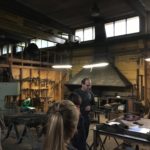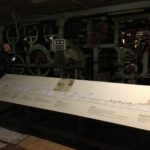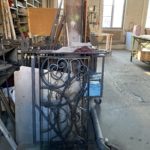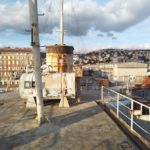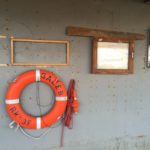In 2018 the four pilot areas of CLIC project – the region of Västra Götaland (SE), Rijeka (HR) , Salerno (IT) and Amsterdam (NL) – kicked off their local process for collaboratively building a Local Action Plan (LAP) for circular adaptive reuse of cultural heritage.
The Heritage Innovation Partnership (HIP) process has jointly been led by a representative from the municipal/regional or non-governmental organisation and a representative from a local research institution in each of the city/regions. The city and academic leaders have convened from the first stage a wider array of additional individuals and organisations that have a pre-existing stake in planning, implementing and/or are interested or affected (positively or negatively) by the adaptive reuse of the cultural heritage.
The involvement of local stakeholders via the HIP dialogues and public meetings has served to collect valuable and first-hand information in the analysis phase of the drafting of the LAP, from mapping barriers and bottlenecks to the identification of environmental and cultural resources, particularly underused and abandoned heritage sites.
Moreover, the contribution of the local community has not been limited to the analysis phase, but it has now reached a second stage: the co-creation of the LAP. For this purpose, pilots have put in place a number of initiatives that drive conversations and dialogue into concrete actions to be included in the plan. Examples entail the establishment of a shared strategic vision, participatory mechanisms to collect ideas (e.g. Open Call in Rijeka and Salerno), and/or the organisation of collaborative workshops for building sustainable business models for selected underused and abandoned heritage spaces.
In order to get a closer insight into the specific (and very diverse) approaches undertaken in each of the pilots, see below a description of the processes in the four CLIC pilot cities/region.
Västra Götaland Region, Sweden
 One of the case studies from the Västra Götaland Region is Fengersfors and a culture centre Not Quite. Not Quite is located in the heart of the picturesque reused mill town Fengersfors, in the lake district of Dalsland, since 2002. Not Quite has been developing into a living, working culture centre, an arts and crafts cooperative, where ideas and encounters are made real, working in a critical way to create social, environmental and economical sustainability. Artists, designers and craftsmen of various kinds have set up their studios and workshops in the old brick, paper factory. There are also exhibition spaces, showing photography, sculpture, painting, installations, and performance, an art gallery and an arts and craft boutique. Not Quite is a network and its members also hold courses, workshops and other participatory events for visitors to the factory.
One of the case studies from the Västra Götaland Region is Fengersfors and a culture centre Not Quite. Not Quite is located in the heart of the picturesque reused mill town Fengersfors, in the lake district of Dalsland, since 2002. Not Quite has been developing into a living, working culture centre, an arts and crafts cooperative, where ideas and encounters are made real, working in a critical way to create social, environmental and economical sustainability. Artists, designers and craftsmen of various kinds have set up their studios and workshops in the old brick, paper factory. There are also exhibition spaces, showing photography, sculpture, painting, installations, and performance, an art gallery and an arts and craft boutique. Not Quite is a network and its members also hold courses, workshops and other participatory events for visitors to the factory.
Fengersfors and Not Quite will be also included in the Local Action Plan of Västra Götaland Region. The fact that Fengersfors has 538 registered inhabitants and 108 registered companies demonstrates vibrant creative environment, capacities of this place to be a test bed for the CLIC project and a place to be actively involved in the development of the Local Action Plan. The cultural centre has 67 co-owners and Not Quite has a vast network of stakeholders interested in being involved of future development of the Local Action Plan.
The Local Action Plan of Västra Götaland Region shall anchor already existing strategies and plans of the region and frame them into coordinated actions, like creating a regional network for property owners interested in adaptive reuse, which will be linked to the regional Heritage Strategy 2030. Furthermore, the LAP foresees a coordination of the County Administrative Board’s contribution to building maintenance and efforts for site development within Västra Götaland Region which will be a direct link to the Regional Development Strategy (currently under development) and Heritage Strategy 2030. The LAP strategically advocates for linking cultural heritage to regional initiatives on recycling of building materials which is associated to the Regional environmental strategy – Climate 2030. Moreover, the LAP will elaborate on the implementation of business and financial models in four cases of Västra Götaland Region, including CLIC cases Fengersfors and Forsvik. The business workshop, which was the HIP 4 (Heritage Innovation Partnership) meeting the same time, implemented in Fengersfors in February 2020, will contribute to the development of the Local Action Plan.
An important milestone for Västra Götaland Region’s LAP is a Think Tank that has been held in March 2020, with colleagues from the departments for Business, Environment and Culture as well as the County Administrative Board, who were supportive and agreed on the approach of creating synergies among existing strategies and reinforcing their implementation. A new Think Tank is planned for mid-May and a final HIP (Heritage Innovation Partnership) meeting for early June that will enforce the finalisation of the Local Action Plan.
Photo gallery from Not Quite case study, in the lake district of Dalsland.
Rijeka, Croatia

The Case Study of CLIC Rijeka is tackling the local action acceleration with interactive, inclusive and participatory actions fostering local traditions and knowledge, by providing a trans-disciplinary and systematic approach integrating heritage regeneration with innovative sustainable businesses through co-creative and participatory methods for a more inclusive, resilient and sustainable governance.
Activities in the CLIC Heritage Innovation Partnerships (HIP’s) Process in Rijeka are focusing on the revitalisation of the distinctive urban area right on the edge of the city centre, back-boned by the river Rječina and its Canyon. The closeness to the city centre, urban and cultural heritage, as well as natural features, present a unique development opportunity for the creation of an integrated urban spatial system – the cultural corridor.
The concept of the corridor was developed within the HIP meetings, involving the stakeholders and the various departments of the City of Rijeka, and taking a benefit of other EU initiatives on resilient cities, as the project URBiNAT. The Cultural Corridor is imagined as a versatile and dynamic space acting as a catalyst of revitalisation or field practice, where a systematic step-by-step implementation of innovative, social and heritage-oriented actions, addressing local issues through an interdisciplinary approach will create conditions of resilience. The micro-interventions aligned with the circular economy can be temporary or recurrent, gradually becoming permanent. They can focus on urban and green areas as well as vacant premises on the city part: this process has been called – urban seeding.
Such Cultural Corridor will act as a catalyst for the circular models developed by the Benčič Circular Economy Incubator (in the Children’s House), offering field practice through urban seeding. The overall goal of the corridor is to be co-creative space where cultural heritage, sustainable businesses and circular economy activities improve the well-being of citizens, enhancing the environmental and social quality of the urban-scape of Rijeka.
The start of the Urban Seeding will be organised as a continuation of the HIP process through three co-design workshops ending in late June 2020. The forthcoming workshops will be held in May 2020 . The main participants will be local students and interested young emerging professionals, striving to develop urban seeds and implement them. In parallel, another process will be connecting the activities in the Benčič Children’s House, where the City of Rijeka, University of Nova Gorica and Art Kino Association designed and launched Open Call, addressing children and youngsters on their vision for the Children’s house. The results of the Open Call will be included to provide a feasible Circular Business Model at the workshop in May 2020.
Salerno, Italy

Rethinking Salerno in a circular vision has meant starting from the community by engaging both citizens and stakeholders to share their perceptions on the tangible and intangible cultural heritage of the city, and then sharing ideas and concrete plans of action related to the abandoned historic buildings and areas of the city for the reactivation and social enhancement of the abandoned / underused assets.
The Municipality of Salerno and CNR IRISS served as facilitators in this process, creating operational synergies between many civil organizations already active in the area but working separately, mainly focused on socio-cultural activities (coworking, digital innovation, training and experimentation, valorisation of cultural heritage etc) sharing a common objective: increasing social, civil and cultural growth in local territory. Many initiatives have been organized by the CLIC team to bring together these forces and engage all the stakeholders in building a shared strategic vision for Salerno as “circular city” starting from abandoned resources.
Heritage Innovation Partnerships aim to build a “Heritage Community[1]” in Salerno, promoting a constructive and constant dialogue between all people interested in the conservation, enhancement and reuse of the city’s cultural heritage. Hosted by Giardino della Minerva, a remarkable example of adaptive reuse completely in line with the circular economy principles, a permanent laboratory welcomed local stakeholders every week from September 2019 to February 2020 to co-elaborate potential actions of adaptive reuse that enhance the specific cultural identity of Salerno (in particular through the promotion of its Ancient Medical School), stimulating new forms of heritage-led entrepreneurship and creating opportunities for sustainable development in the long term based on the reactivation of cultural and social capital.
The results of these initiatives will lead to the co-creation of the “Local Action Plan for the reuse of the abandoned and underused cultural heritage in the city of Salerno, in the perspective of the circular economy”.
One key action is the realization of a Regulation for the shared management of cultural heritage as a “common good”, based on the experience carried out by other Italian cities such as Bologna, to stimulate the creation of Public-Private-People Partnerships for the realization of diverse adaptive reuse projects. These initiatives span from small projects like the reuse / enhancement of green spaces, squares, streets, small cultural places that do not require a significant investment and can be managed directly by citizens / associations / companies that intend to improve the status of the places for social activities, to intermediate projects focused on the re-use of buildings and cultural sites already in conditions of medium / good accessibility, to the more demanding projects implying high financial investments and technical capacities.
In this regards, the Municipality of Salerno has recently launched a Public Consultation to invite all potential stakeholders to submit their ideas, inspired to circular economy, for the adaptive reuse of the Edifici Mondo, a complex of large abandoned historic buildings located in the historical centre of the city, including “Palazzo San Massimo”, Convent of “San Francesco”, Convent of “San Pietro a Maiella and San Giacomo” and Convent of “Santa Maria della Consolazione”, for about 70.000 square meters. Submitted ideas will be further developed and implemented during the Co-design Circular Business Model workshop held by ICHEC Brussels under the guidance of local and international experts. The public consultation represents a further way to guarantee inclusiveness and a first experimentation of “circular governance” to be included in the abovementioned Regulation.
Special attention is paid also to the enhancement of the Ancient Medical School as a cultural identity and “brand” for sustainable tourism, promoting Salerno as “city of health and well-being”. In this context, the Giardino della Minerva, a historic therapeutic garden that has recovered the knowledge and places of the ancient Medical School of Salerno, now an interesting cultural attractor in the city recording more than 50.000 visitors per year, candidate for the European Cultural Routes of the Council of Europe to develop a European network of historic botanic therapeutic gardens (including Cordoba in Spain, Uppsala in Sweden and Kos in Greece).
[1] A heritage community consists of people who value specific aspects of cultural heritage which they wish, within the framework of public action, to sustain and transmit to future generations”, as defined by Faro Convention (Portugal, 2005).
Heritage Walk
With the aim of increasing awareness of cultural heritage values and recognizing the key role that culture and creative activities play in building community relations, on January 3, 2020, the CLIC team in collaboration with associations and companies of Salerno organized the event Re.LIGHT | Lights on Cultural Heritage, a “heritage walk” aimed to rediscover and light up the abandoneded, underused and reused historical-cultural places, “bringing to light” the experiences of reuse and enhancement of the tangible and intangible cultural heritage that have started-up ‘culture-led’ urban regeneration processes, transforming abandoned places into new “beating hearts” of cultural and social life in Salerno.
Pakhuis de Zwijger Foundation in Amsterdam, The Netherlands

Pakhuis de Zwijger will host in Amsterdam the Heritage Innovation Partnerships meeting, the peer review and a number of CLIC internal meetings.
Due to the Covid-19 emergency and relevant governmental measures, the event has been restructured as an online meeting. The program will involve the introduction of different cultural heritage sites that have been sustainably reused in Amsterdam. This will be the occasion to review the corporate story of Pakhuis de Zwijger.
Actually, Pakhuis de Zwijger is in the process of reviewing and evaluating its business model to increase circularity of its financing model. In light of this, Pakhuis organized a Heritage Innovation Partnerships meeting (HIP3) with its partners including a workshop on its financial business model. 31 external partners attended the meeting, including the municipality of Amsterdam, the Port of Amsterdam, University College Amsterdam, property developers, knowledge institutes, housing Corporations and a local radio station. The workshop explained the structure of the revenue and expenditure streams of Pakhuis de Zwijger to create understanding with the partners of the importance of their financial contributions for the continuity of the organization. The partners were asked to provide feedback and their findings on the model.
Within the HIP4 meeting, the HIP Open Day will take place. This workshop will be a local stakeholder analysis through which the local impact of Pakhuis de Zwijger on and in its immediate surroundings will be evaluated. Stakeholders will include local businesses on the Osterode, local government representatives, active Residents within the area, city brokers, employees of surrounding organisations such as the Port of Amsterdam, the Public Library and Pension Homeland.

